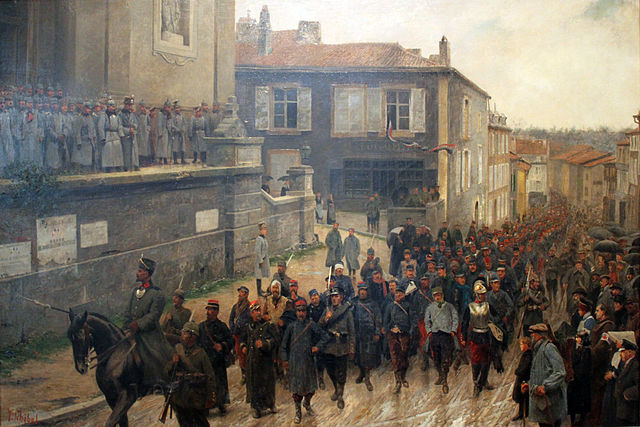The British, the Great War, and Yod Sangrungruang.
A new book in the Thammasat University U Libraries collection arrives just in time for the centenary of the outbreak of World War I:

Zeppelin Nights: London in the First World War by Jerry White
The conflict known as World War I, the First World War, or the Great War killed over 16 million people and wounded 20 million. Today we may see it as a prelude to World War II which was even more deadly, with over 60 million people killed. Getting an idea of what carnage on this scale really means can be difficult, especially as there is no fighter left alive from World War I, which ended in 1918. The last surviving veteran of the World War I from any country was Florence Beatrice Green (1901-2012), an Englishwoman who was a member of the Women’s Royal Air Force. Without any more eyewitnesses, we must rely on historians such as the capable and informed Jerry White, a specialist on modern London. White reminds us that the World War II Blitz (short for the German word Blitzkrieg or lightning war) is still widely remembered, when Germany bombed the United Kingdom, killing over 28,000 civilians and wounding over 25,000. Yet during the Great War as well, Germans dropped bombs on the British, killing 668 Londoners and injuring about 2,000. The bombs were dropped from Zeppelins, a rigid airship named for a German count, Ferdinand von Zeppelin who designed these airborne vehicles.
Surviving dangers.
The details of how all this affected the civilian population are useful to know, because they remind us of the constant horror of war. From 1914 to 1918, Londoners were worried about bad housing, low salaries, and human trafficking, subjects that are still of concern in Thailand today. How did the British get through this difficult time? Some of them responded with the famous English “stiff upper lip” attitude, but many others did not. Losing beloved family members was difficult for all, and the writer Arthur Conan Doyle, who created the literary character Sherlock Holmes, wrote books about communicating with his son after the boy was killed in battle. After a hundred years, it is time to pay more attention to the ghosts of that war. Certainly anyone thinking about making a trip to London as a tourist would benefit from White’s descriptions of how the city was changed by the conflict.

Thailand and the Great War.
Although the TU Libraries do not seem to own any books on the subject, Siam also played a role in the Great War. Before the war, King Rama VI had been close to Germany, but by July 1917 it looked as if Britain and France would be the winners. Siam declared war on Germany and Austria-Hungary. Doing so, they seized a dozen German ships then in Siam, thereby adding to the development of the Thai navy. After the war, Siam would be given a seat at the Versailles Peace Conference and the League of Nations, and received better treatment on an international level in the years following the conflict. Siam sent 1,284 volunteer troops under the command of General Phya Pijaijarnrit to the Western Front to serve with the French and British forces. These included 95 pilots, doctors, nurses, and others. Reports indicate that while the pilots arrived too late to participate in air combat, Siamese female nurses became the only women to serve in the trenches on the Western Front, a notoriously horrible and dangerous place. Apart from some Vietnamese soldiers fighting for the French, these Siamese combatants were the only Southeast Asians to fight in the European war. 19 Siamese were killed during the war.
The last surviving member of the Siamese Expeditionary Corps, Yod Sangrungruang, died in 2003 at age 106. As “The Nation” reported, Yod Sangrungruang died in Phitsanulok and his funeral was held at Sakad Namman Temple in Muang Phitsanulok district. He was survived by his widow Somporn, 101. Yod was born in Phitsanulok in 1897. At age 20, he volunteered to fight in the Great War and after three months of special training, he was sent to France for just over a year until the war was over, serving as a mechanic. He was with his country’s forces when they returned to Siam in September 1919. A war memorial in Sanam Luang Park in Bangkok lists the 19 Thai soldiers killed on the Western Front during World War I. In November 2014, to commemorate the war’s centenary, the French Embassy in Bangkok hosted an exhibition of photographs of the Siamese forces.
(all images courtesy of Wikimedia Commons).

